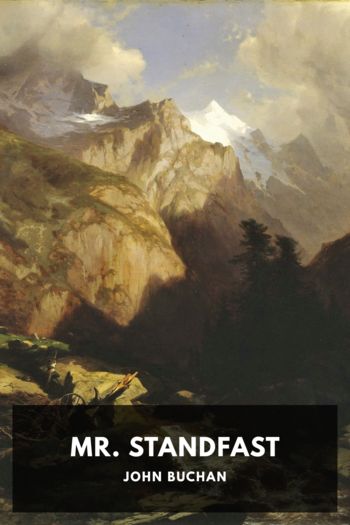Freedomnomics: Why the Free Market Works and Other Half-Baked Theories Don't by John Jr. (books to read for 12 year olds txt) 📗

- Author: John Jr.
Book online «Freedomnomics: Why the Free Market Works and Other Half-Baked Theories Don't by John Jr. (books to read for 12 year olds txt) 📗». Author John Jr.
73 Data show that a person’s income drops dramatically upon arrest, even before a conviction. For example, those charged with anti-trust offenses face an average drop in income of about 60 percent at the time of arrest. Walter M. Grant, John LeCornu, John A. Pickens, Dean H. Rivkin, and C. Roger Vinson. “Special Project—the Collateral Consequences of a Criminal Conviction,” Vanderbilt Law Review, vol. 23, October 1970, 929-1241.
74 Bryan Burrough, “After the Fall: Fates are Disparate for those charged with insider trading,” Wall Street Journal, November 18, 1987.
75 David Henry, “Stubborn taint of Wall Street scandals clings to the innocent and guilty alike,” Newsday, February 9, 1992.
76 Grant, et. al, “Special Project,” 929-1241.
77 President’s Commission on Law Enforcement and Administration of Justice. Task Force Report: Corrections. U.S. Government Printing Office, Washington (1967), 88.
78 Velmer S. Burton, Jr., Francis T. Cullen, and Lawrence F. Travis III, “The Collateral Consequences of a Felony Conviction: A National Study of State Statutes.” Federal Probation Quarterly 33 (September 1987): 52-60., 55. See also Benson, Michael L. “The Fall from Grace: Loss of Occupational Status as A Consequence of Conviction for a White-Collar Crime.” Criminology 22 (November 1984): 573-594.
79 Levitt and Dubner, Freakonomics, 69.
80 Jonathan Karpoff and John R. Lott, Jr., “The Reputational Penalty Firms Bear for Committing Fraud,” Journal of Law and Economics, vol. 36, no. 2, October 1993: 757-758. The money lost to environmental crimes is typically borne by those directly affected by the pollution.
81 Jonathan Karpoff, John R. Lott, Jr.,and Eric Wehrly, “The Reputational Penalties for Environmental Violations: Empirical Evidence,” Journal of Law and Economics, vol., no. 2 (October 2005): 653-675.
82 This is over $100 million in 2005 dollars. See Karpoff and Lott, “The Reputational Penalty.”
83 Karpoff, Lott, and Wehrly, 2005.
84 I owe this example to Benjamin Klein who taught me industrial organization when I was a graduate student at UCLA in the early 1980s.
Chapter Three: Government as Nirvana?
1 Harold Demsetz, “Information and Efficiency: Another Viewpoint,” Journal of Law and Economics, April 1969, 1-22, and Joseph P. Kalt, “Public Goods and the Theory of Government,” Cato Journal, Fall 1981, 565-584. The title of this chapter is taken from Demsetz’s paper.
2 Ian Ayres and Barry Nalebuff, “Stop, Thief!” Forbes, January 10, 2005. Http://www.forbes.com/forbes/2005/0110/088_print.html.
3 Ayres and Levitt, “Measuring Positive Externalities from Unobservable Victim Precautions: An Empirical Analysis of Lojack,” Quarterly Journal of Economics, February 1998, 43-77.
4 Steve Levitt made this claim when he presented his paper on this topic at the University of Chicago.
5 This does not imply that the politicians would be bought off by LoJack or its competitors. Rather, it reflects politicians’ natural desire to pass legislation that benefits the people and companies in their communities.
6 The comparison between open carry and LoJack is not exact because open carry may benefit people without guns if those with the guns can protect them.
7 Milton Friedman, “The Role of Government in Education,” Economics and the Public Interest, 123-153, Edited by Robert Solow, New Brunswick, NJ: Rutgers University Press, 1955.
8 Note, however, that if only certain cars like Porsche were to use LoJack, there would be no free-riding problem because there’d be no benefit for anyone except Porsche owners. Additionally, one might assume that putting a “protected by LoJack” sticker on cars that have LoJacks would solve the free-riding problem, However, this would most likely spur a black market in such stickers for use by free-riders who don’t actually have the device.
9 Thomas H. White, Financing Radio Broadcasting (1989-1927), in United States Early Radio History (http://earlyradiohistory.us/sec020.htm).
10 Ibid.
11 Waldemar Kaempffert, “Who will pay for broadcasting?: A frank and searching outline of Radio’s most pressing problem and the possible ways to solve it,” Popular Radio, December, 1922, 236-245.
12 Steven N.S. Cheung, “The Fable of the Bees: An Economic Investigation,” Journal of Law and Economics, 1973.
13 Harold Demsetz, “The Exchange and Enforcement of Property Rights,” Journal of Law and Economics, October 1964, 15.
14 Mary Muth, Randall Rucker, Walter Thurman, and Ching-Ta Chuang, “The Fable of the Bees Revisited: Causes and Consequences of the U.S. Honey Program,” Journal of Law and Economics, October 2003, 479-516.
15 National Taxpayers Union, “Who Pays Income Taxes? See Who Pays What: For Tax Year 2004,” National Taxpayers Union Foundation, (http://www.ntu.org/main/page.php?PageID=6).
16 See also Joseph P. Kalt, “Public Goods and the Theory of Government,” Cato Journal, Fall 1981, 565-584.
17 Rawle O. King, “Federal Flood Insurance: The Repetitive Loss Problem,” Congressional Research Service, June 30, 2005.
18 Owen Ullman, “High Risk Life, High Expense to Taxpayers: Federal Disaster Aid Makes It Feasible to Build In Harm’s Way,” USA Today, July 24, 2000, 6A.
19 Ibid.
20 Bert Ely, “Savings and Loan Crisis,” The Concise Encyclopedia of Economics (http://www.econlib.org/library/enc/SavingsandLoanCrisis.html), and Edward J. Kane, “The Gathering Crisis in Federal Deposit Insurance,” The MIT Press; New edition (August 9, 1985).
21 Bill Redeker, “Mount Hood Climbers: What Price Glory?” ABCnews.com, December 12, 2006 (http://abcnews.go.com/US/story?id=2720158&page=1).
22 “After Mount Hood tragedy, Ore. lawmaker wants mountain locators,” Seattle Post Intelligencer website, http://seattlepi.nwsource.com/local/6600ap_wst_climber_safety.html.
23 Prior to Kelo, eminent domain had also been used to develop blighted neighborhoods. For a related discussion, see Sonya D. Jones, “That Land Is Your Land, This Land Is My Land . . . Until the Local Government Can Turn It for a Profit: Analysis of Kelo v. City of New London,” BYU Journal of Public Law, Fall 2005, 139-165.
24 Http://www.kochind.com/industry/pipelines.asp.
25 Based on a personal conversation with Bill Dougan on January 6, 2007.
26 Jonathan Karpoff, “Private versus Private Initiative in Arctic Exploration: The Effects of Incentives and Organizational Structure,” Journal





Comments (0)